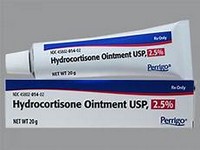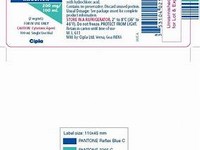Cortisone acetate

Cortisone acetate
CLINICAL USE
Glucocorticoid replacement in adrenocortical insufficiencyDOSE IN NORMAL RENAL FUNCTION
25–37.5 mg daily in divided dosesPHARMACOKINETICS
DOSE IN RENAL IMPAIRMENT
GFR (mL/MIN)
DOSE IN PATIENTS UNDERGOING RENAL REPLACEMENT THERAPIES
IMPORTANT DRUG INTERACTIONS
Potentially hazardous interactions with other drugsAntibacterials: metabolism accelerated by rifampicin; metabolism possibly inhibited by erythromycinAnticoagulants: efficacy of coumarins may be alteredAnti-epileptics: metabolism accelerated by carbamazepine, barbiturates, phenytoin and primidoneAntifungals: increased risk of hypokalaemia with amphotericin – avoid concomitant use; metabolism possibly inhibited by itraconazole and ketoconazole. Antivirals: concentration possibly increased by ritonavirCiclosporin: rare reports of convulsions in patients on ciclosporin and high-dose corticosteroidsCytotoxics: increased risk of haematological toxicity with methotrexateDiuretics: enhanced hypokalaemic effects of acetazolamide, loop diuretics and thiazide diureticsVaccines: high-dose corticosteroids can impair immune response to vaccines; avoid concomitant use with live vaccinesADMINISTRATION
Reconstition
–Route
OralRate of Administration
–Comments
–OTHER INFORMATION
Treatment of adrenocortical insufficiency with hydrocortisone is now generally preferred since cortisone itself is inactive. It must be converted by the liver to hydrocortisone, its active metabolite, and hence, in some liver disorders, its bioavailability is less reliableMineralocorticoid activity is usually supplemented by oral fludrocortisone acetateCortisone acetate has been used in the treatment of many allergic and inflammatory disorders, but prednisolone or other synthetic glucocorticoids are generally preferred because of their reduced sodium retaining properties.
See how to identify renal failure stages according to GFR calculation
See how to diagnose irreversible renal disease
Home








